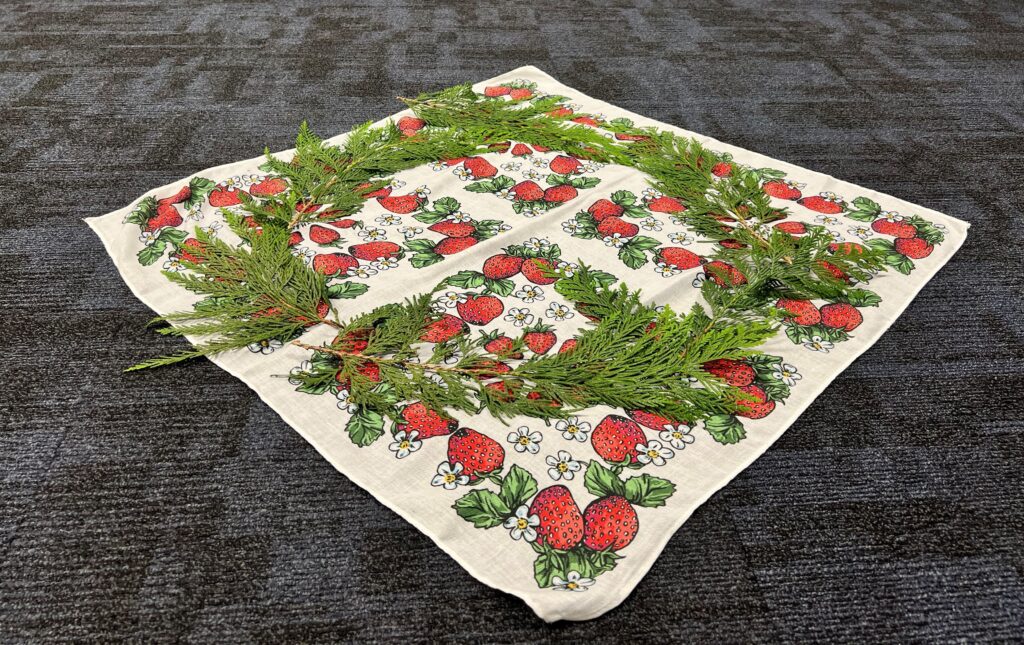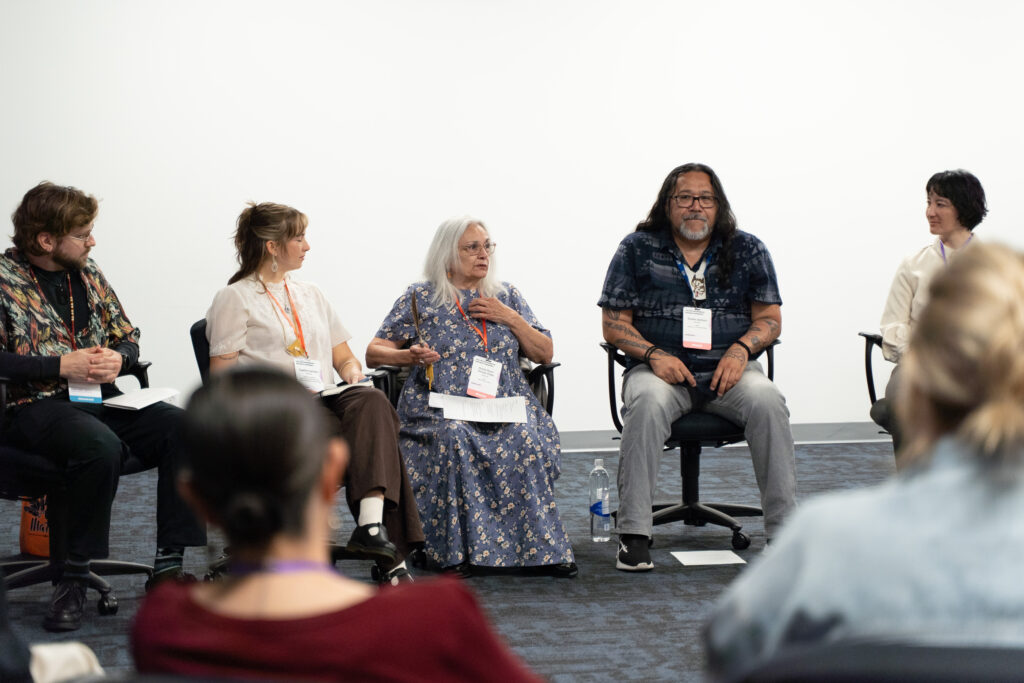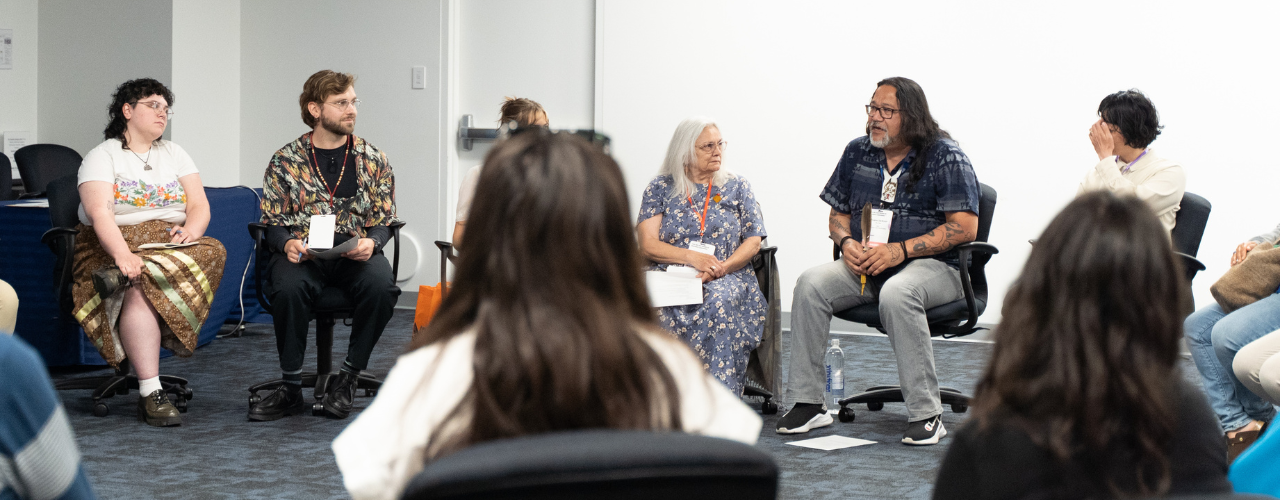Sophie Carriere, a Research Coordinator at HELP, provides a reflection from the Partnering in Research Conference at UBC, bringing ceremony into the space as a part of the Roots initiative.
Back in the early weeks of 2025, Sam Filipenko and I sat down to talk about the Partnering in Research Conference, a biennial gathering of UBC researchers and community partners who collaborate on mutually beneficial research projects. He asked if I would want to have a session with him to highlight the Roots Circle as part of the conference’s theme of engagement.
Roots has been in development for a little over a year now, and serves as a decolonized space at UBC to build capacity amongst researchers to engage in more reciprocal, relational, and appropriate partnerships with Indigenous communities. We both thought it would fit well at the conference, which explores the transformative world of partnered research through honest conversations, practical strategies, and laughter. I wasn’t sure what our approach to a presentation might be, until Sam asked, “Well, could we just have a Roots Circle at the conference?”

The Basis of Circle Work
It’s important to know that the Roots Circle has always been a ceremony. The circle work we do at the beginning of every event is not only crucial to opening our day in a good way, but is an opportunity to center our gatherings around culture and tradition. The circles play out as intended, naturally and unplanned, save for an opening and closing from our Elders. This fluidity and unhurried attitude are integral parts of a talking circle – everyone may speak their voice, and we will not be done until the feather has made its way counterclockwise through each of our careful hands. This practice can go on for hours, and the time we have together is always a gift.
So, when Sam brought up the question of bringing this practice to a conference, my first thought was, “Is that even possible?” Each session at the conference is limited to 50 minutes, and time constraints and ceremonies have never been complementary. But as the weeks went on, we became more certain that the circle was something we wanted to share, despite the logistical challenges. We came up with an ambitious plan – four rounds within a talking circle, each centered around a question with a brief answer, with an opening and closing from our Elders. On the day of the conference, we were able to host the Roots Circle in 57 minutes.

Cherished Moments From Around the Circle
It is incredibly special to see thirty faces in ceremony together. It feels like a community, where we are able to share our thoughts and feelings and feel supported by those around us. One teaching I’ve received is to never take notes within a talking circle. Firstly, to keep your attention on those around you, and secondly there is a rule that everything said in the circle stays in the circle. Our team spoke with one of our Elders about wanting to create a graphic of our collective learnings, and she gently reminded us of this teaching. But, she added, with permission of those in our circle, it would be appropriate to document our learnings given our intention of creating collective wisdom. I mention this because it is important to honour our protocols. But, it’s also important to recognize where there may be room to make adaptations that benefit the cause.
This graphic is a summary of the wisdom shared within the Roots Circle to better support research partnerships with Indigenous communities. Each quadrant is a collection of answers from one round within the talking circle. It is meant to be used as a learning tool for each of us to reflect on our values, our feelings, our challenges, and our opportunities to create change. It also serves as a tool to consider new ways of discussing, documenting, and celebrating our collective knowledge.

Does Circle Work Belong at a Conference?
If you ask me, I would say that ceremony belongs everywhere, so long as it is shown respect. It was incredible to hold space for the Roots Circle within a conference, and the values, feelings, and diligence of everyone involved was a testament to the strength of the circle. It was inspiring to hear how impactful it was, and to learn that those involved would like to stay connected to this work and share their experience with others.
I am inspired by and grateful for the impact a 50-minute circle can have. But I ask, how could this impact grow if we were allowed to share our voices more freely? Listen more intently to those around us? Visit with one another with no concern for time? Yes, we succeeded in this work in spite of time constraints, but we shouldn’t have to. That might start with making allowances within conferences and in other spaces to show respect for ceremony, but I would like it to end with a gathering specifically created for this work. A place where ceremony isn’t diluted to be woven into a more rigid system, but where it can stand firmly on its own.
I would like to say a big thank you to everyone who attended the Roots Circle and the Partnering in Research Conference. Thank you to our Elders, Rosie George-Dapp and Duane Jackson, and to our team Sam Filipenko and Aria Viveiros. Though this article was written in the first person, it was deeply influenced by the voices of my team.
If you’d like to learn more about or attend the Roots Circle, explore our website and sign up for our mailing list.
Sophie Carriere is the research coordinator for a partnered project between HELP and the Centre for Excellence in Indigenous Health (CEIH). The project, entitled Creating Structures for Meaningful Indigenous Community & UBC Health Partnerships aims to explore and create structures that will support relational, reciprocal, and meaningful partnerships between Indigenous communities and UBC. If you have questions about this project, please contact Sophie.
